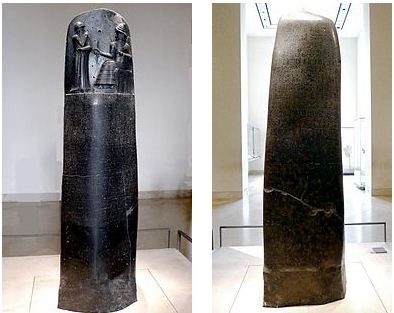Do you know the Hammurabi Code?
Regards,
In my first Post, mention that I am a professional in the area of Occupational Hygiene and Safety. A beautiful career full of daily challenges, as it requires its professionals to possess extensive knowledge in all branches of the industry; which allows us to understand and assess the risk that derive from jobs.
I remember that starting my career, a teacher presented us with the first attempt of legislation of the human being "The Code of Hammurabi", experience that I would like to share because its history is something peculiar.
The Code of Hammurabi, dated to the year 1692 BC, and is presented as a large wake of basalt of 2.25 meters high. Below are inscribed, characters that govern everyday life. It is currently exhibited at the Louvre Museum in Paris.
The laws of this code, (numbered from 1 to 282, although numbers 13, 66-99 and 110-111 are missing) are inscribed in ancient Babylonian and set various rules of daily life, mentioning, among other crimes, the theft , agricultural activity (or livestock), damage to property, women's rights, rights in marriage, the rights of minors, the rights of slaves, homicide, death and injury. The punishment varies according to the type of offender and victim. But I was particularly struck by the following statements:
- Wages or remuneration should vary according to the nature of the work carried out and the time it will take.
- Professional responsibility is born, because if the house built by an architect collapsed and it caused the death of its occupants or serious damages, it was condemned to the death penalty.
- It is in this code, where we observe the first signs of job security, because if a worker was injured in a job, the same injury should be caused to his foreman. For example, if during one day one of the slaves had a finger amputated, the same limb should be amputated to his foreman. This was because the "Supervisors" were directly responsible for the safety of these slaves.
This shows that hygiene and safety at work is not something new, or applied by "fashion"; this system, somewhat obsolete and radical, creates the basis of what today is the protection of the worker and that allows us to guarantee the welfare of the same; achieving thus, highly productive societies with great opportunities for growth.
Congratulations @habreum! You received a personal award!
Click here to view your Board
Do not miss the last post from @steemitboard:
Congratulations @habreum! You received a personal award!
You can view your badges on your Steem Board and compare to others on the Steem Ranking
Vote for @Steemitboard as a witness to get one more award and increased upvotes!